Remnants of Medieval Amsterdam
Amsterdam was founded in 1306, or to be more precise, this is the year in which (probably) city rights were granted (sources on the exact date vary). City rights gave privileges to a city. A city wall could be built, markets held, tolls levied and mint their own coins.
Amsterdam has very few medieval buildings, because in 1421 a fire destroyed two-thirds of the city. When another fire raged through the city in 1452, legislation was passed that prohibited the use of wood as a building material.
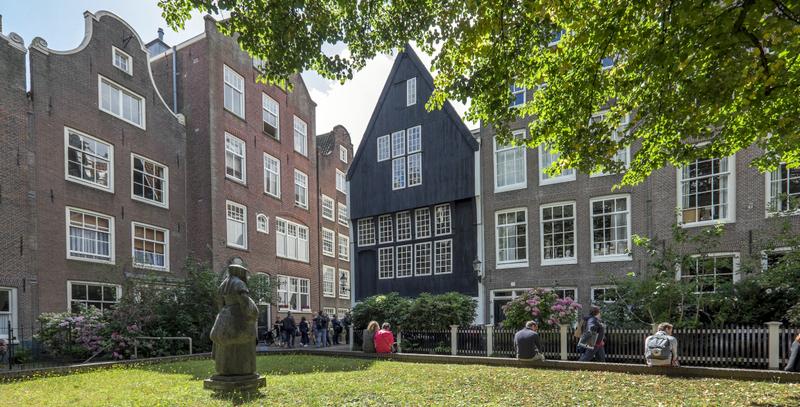
Medieval Buildings in Amsterdam
1. Wooden houses
2. Old Church
3. Defense towers
1. Wooden Houses
Two wooden houses have survived to this day. The oldest house dates from 1420 and is located in the Begijnhof. The other wooden house is a pub, In ‘t Aepjen, on the Zeedijk. Wooden house is not entirely correct because only the facades of these houses are made of wood. The rest is made of brick.
Begijnhof is one of the many almshouses in Amsterdam but one of the largest and most beautiful. In the middle of the Begijnhof is a lawn with the English Reformed Church, surrounded by seventeenth and eighteenth century houses. Begijnhof was founded in the twelfth century and offered accommodation to Beguines, an order of lay nuns who taught the poor and cared for the sick in exchange for shelter. Het Houten Huys is at number 34.
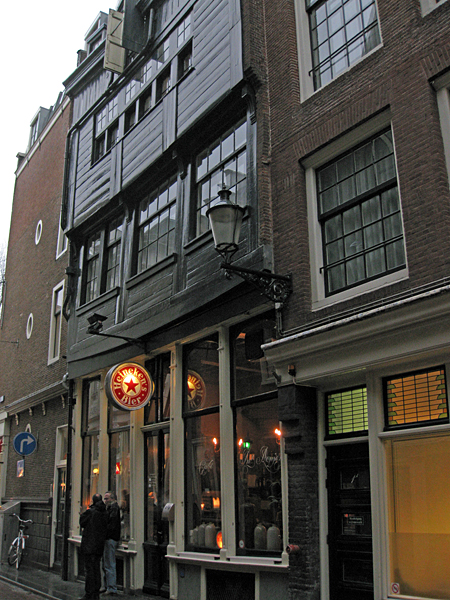
In ‘t Aepjen is the oldest pub in Amsterdam, originally an inn for sailors. These sailors drank and gambled and often did not have enough money to pay their debts. The innkeeper accepted monkeys that the sailors brought back from the Dutch East Indies. As a result, the inn was plagued by monkeys and fleas. Sailors who stayed here were easy to recognize because they scratched themselves like crazy and were in big trouble. The Dutch expression: ‘in de aap gelogeerd’ means that someone is in trouble.
Nowadays, in ‘t Aepjen is a popular pub. Be warned though, leave your monkey at home because you can only pay cash or by card.
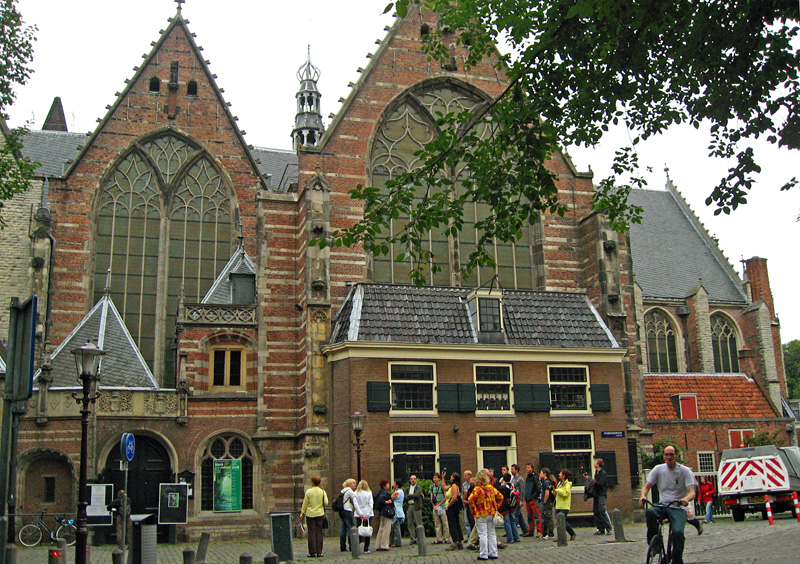
2. Oude Kerk
The oldest monument in Amsterdam is the Oude Kerk (Old Church), in the middle of the red light district. Construction began in 1250 but the church was not consecrated until 1306. Over the centuries the church has served many purposes. Peddlers set up stalls in the aisles and merchants made deals. It was a meeting point for travelers and offered shelter to the homeless. Pilgrims came in their thousands after a miracle had occurred. They provided the church with extra money that was used to build aisles, chapels and more towers.
More than 10,000 people are buried in the Oude Kerk and the floor is covered with gravestones. One gravestone can contain up to four graves, because the dead are buried on top of each other. At the back of the church is a secret door to the iron chapel, a hiding place for important city documents. The oak Vater-Müller organ is surrounded by wooden statues representing biblical figures. Composer and organist Sweelinck was the main organist of the church.
The Oude Kerk is still a house of prayer but it is also is home to rotating exhibitions. The mirror room, the former sacristy, is furnished as a style room. This was the place where marriage certificates were signed. The most famous document signed in this room is the marriage certificate of Rembrandt van Rijn and Saskia van Uylenburgh on 10 June 1634.
3. Defense Towers
After Amsterdam had obtained city rights, the city council could build a city wall with defense towers. The Waag, the Schreierstoren and the Munttoren are remnants of this.
In 1481, the construction of the city wall began. It was six meters high and had several defense towers. Amsterdam citizens were expected to do their bit, literally by supplying bricks, but a sum of money was also welcome.
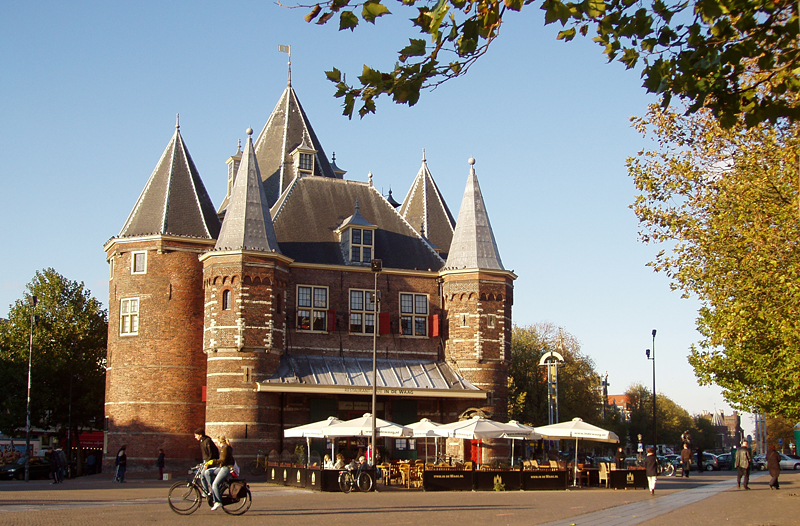
The Waag
The Waag dates from 1488. This building with multiple towers started as one of the fortified gates of the City of Amsterdam. It was later converted into the municipal weigh house. The upper floors were used by the surgeons’ guild, and used for public lessons as can be seen in Rembrandt’s painting The Anatomy Lesson of Dr. Nicolaes Tulp. In the Napoleonic era, the Nieuwmarktplein, the square in front of the Waag served as a public execution site. Nowadays, the Waag is a café-restaurant In de Waag with culinary surprises and an outdoor terrace in the summer.
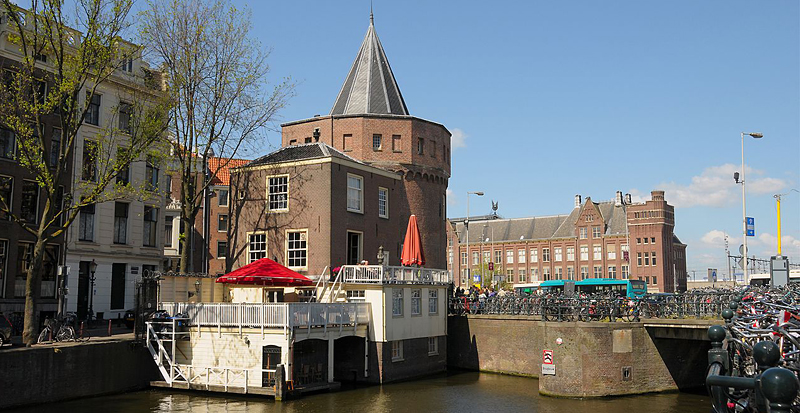
Schreierstoren
In 1481, construction of the Schreierstoren began. This was the place from which the first ship left for the East Indies in 1595, under the command of Cornelis Houtman, a Dutch merchant and explorer. Unfortunately, things went badly for him. Four years after arriving in the East Indies, he was stabbed with a kris, an Indonesian type dagger, and died.
On 4 April 1609, Henry Hudson left from here for the New World. He was commissioned by the VOC (Dutch East India Comapnay) to find a western passage to the Indies. After the Schreierstoren lost its defensive function, it served as a harbour office for some time. There is now a café in the tower.
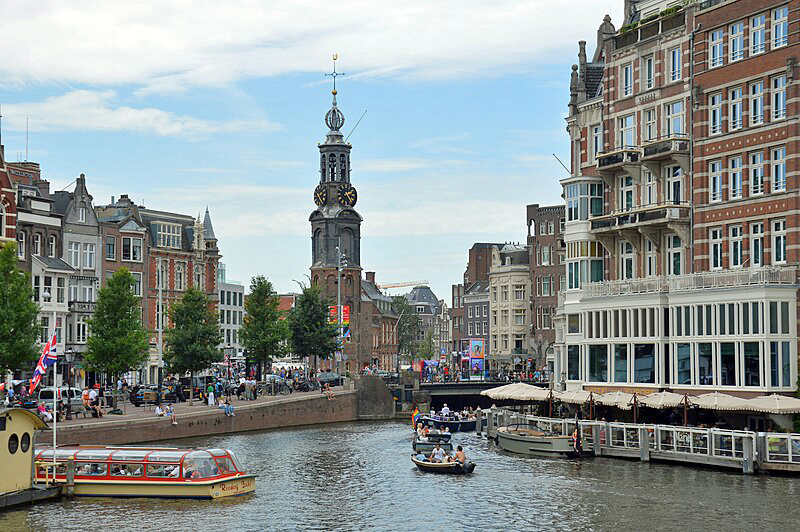
Munttoren
The official name of the Munttoren (Mint Tower) is Regulierstoren, which used to be part of the Regulierspoort. This was one of the three city gates in the medieval fortification.
In the seventeenth century, the building was converted into a mint. It was the task of the mint masters to check the silver and gold content of the coins. In the Amsterdam mint, silver and gold ducats were minted that bore the city’s coat of arms.
Previous article: Learn about the history of Delft Ware
Next article: Rembrandt as Portrait Painter


